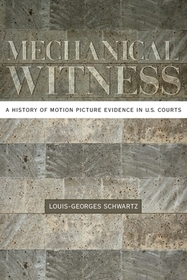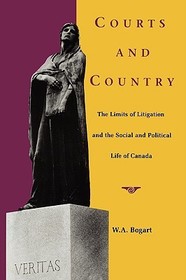
Mechanical Witness
A History of Motion Picture Evidence in U.S. Courts
- Publisher's listprice GBP 28.99
-
13 849 Ft (13 190 Ft + 5% VAT)
The price is estimated because at the time of ordering we do not know what conversion rates will apply to HUF / product currency when the book arrives. In case HUF is weaker, the price increases slightly, in case HUF is stronger, the price goes lower slightly.
- Discount 10% (cc. 1 385 Ft off)
- Discounted price 12 465 Ft (11 871 Ft + 5% VAT)
Subcribe now and take benefit of a favourable price.
Subscribe
13 849 Ft

Availability
printed on demand
Why don't you give exact delivery time?
Delivery time is estimated on our previous experiences. We give estimations only, because we order from outside Hungary, and the delivery time mainly depends on how quickly the publisher supplies the book. Faster or slower deliveries both happen, but we do our best to supply as quickly as possible.
Product details:
- Publisher OUP USA
- Date of Publication 5 November 2009
- ISBN 9780195315066
- Binding Paperback
- No. of pages144 pages
- Size 137x206x7 mm
- Weight 159 g
- Language English 0
Categories
Short description:
Mechanical Witness will be the first cultural and legal history charting the changing role and theoretical implications of the use of film and video as courtroom evidence. The author moves from the earliest uses of film in the courts of the 1920s to Osama Bin Laden's taped statements after 9/11, revealing how the courts have developed a reliance on film and video technologies and contributed to the growing influence of visual media in twentieth century America. At the same time, the meaning of film and video as used in juridical contexts has developed a theoretical legacy which both resonates with and contradicts existing scholarship--focusing on economic, social, or aesthetic factors--which hitherto has defined film's status and cultural contribution. In the context of a trial, the possible meanings of a film or video can be very different from its meaning when shown in a movie theater or broadcast on television, yet the public and cinema scholars tend to assume that the meaning of an image remains constant. Mechanical Witness demonstrates that we must understand evidentiary film and video's institutional specificity if we are to understand the effects of motion picture technologies on our culture. This study sets the terms for a long overdue assessment of how the entertainment industry has dominated and shaped our film viewing practices, the place of moving picture evidence in the courtroom, and the social and cultural consequences of these intertwined histories.
MoreLong description:
Mechanical Witness will be the first cultural and legal history charting the changing role and theoretical implications of the use of film and video as courtroom evidence. The author moves from the earliest uses of film in the courts of the 1920s to Osama Bin Laden's taped statements after 9/11, revealing how the courts have developed a reliance on film and video technologies and contributed to the growing influence of visual media in twentieth century America. At the same time, the meaning of film and video as used in juridical contexts has developed a theoretical legacy which both resonates with and contradicts existing scholarship--focusing on economic, social, or aesthetic factors--which hitherto has defined film's status and cultural contribution.
In the context of a trial, the possible meanings of a film or video can be very different from its meaning when shown in a movie theater or broadcast on television, yet the public and cinema scholars tend to assume that the meaning of an image remains constant. Mechanical Witness demonstrates that we must understand evidentiary film and video's institutional specificity if we are to understand the effects of motion picture technologies on our culture. This study sets the terms for a long overdue assessment of how the entertainment industry has dominated and shaped our film viewing practices, the place of moving picture evidence in the courtroom, and the social and cultural consequences of these intertwined histories.
This pathbreaking study of case law rescues film studies from the cloisters by tracing the use of cinema in the U.S. courts. Valuable for its research and a model of exposition, this is a marvelous book.
Table of Contents:
Introduction
Introducing Films into the Courts: The 1920s
The Development of Case Law Governing the Use of Motion Picture Evidence in the 1940s and 1950s
Framing Videotape: The Electronic Para-Sight, Juridical Infrastructure, and Testimonial Images In and Out of Court
The Rodney King Case, Or Moving Testimony
Bibliography
Index





